Below is an in-depth look at the storied legacy of the American Triple Crown, detailing each champion along with the top jockeys, trainers, owners, and glimpses of the competitive fields they faced in the Kentucky Derby, the Preakness Stakes, and the Belmont Stakes. These thirteen champions not only redefined speed, stamina, and strategy on the track but also forever altered the narrative of horse racing in the United States.
---
The Triple Crown: A Brief Overview
The Triple Crown is comprised of three races held over a five week period. The Kentucky Derby is run the first Saturday in May, the Preakness Stakes two weeks later, and the Belmont Stakes, another three weeks after, falling on the first Saturday in June. Each race tests different facets of a racehorse's ability - from the tactical speed and courage tested at the Derby to the explosive speed needed for the Preakness and the endurance required for the 1 1/2 mile Belmont. Winning all three is a rare and treasured feat that only 13 horses have accomplished, with each champion supported by visionary owners, masterful trainers, and brilliant jockeys. While every race presents a unique field of challenge, certain rivalries and noteworthy competitors have defined some of these campaigns - from legendary duels on the track to record-shattering margins of victory.
1. Sir Barton (1919)
The Pioneer of Greatness
Sir Barton broke new ground as the very first Triple Crown winner. In 1919, when record-keeping and widespread media coverage were only just beginning to capture the magic of the sport, Sir Barton triumphed wire-to-wire on each leg of the series. Though the fields were smaller than those of later eras, he faced determined competitors in the Derby and Preakness, but by the time the Belmont rolled around, only two other horses would test the first Triple Crown champion, the coupled entry of Sweep On and Natural Bridge. Sir Barton went to the front, never looked back, and won the Belmont easily.
He was not the favorite in the Kentucky Derby, but a drenching rain gave the steed a speec advantage. Eternal and Billy Kelly were the choices amongst the plungers, but Sir Barton sprung to the front and won the race by five lengths.
The track was fast for the Preakness, but Sir Barton proved the Derby to be no fluke. Once again, Loftus put him on the lead and he dominated the field, winning by four lengths.
A Beacon for Future Generations
Gallant Fox's Triple Crown campaign in 1930 signaled a new era. With Earl Sande guiding him and "Sunny Jim" Fitzsimmons at the training helm, Gallant Fox not only won the races but also demonstrated consistency and class. Competing against the most promising three-year-olds of his time, his performances established him as a yardstick for future champions.
After winning the first two legs of the series handily, Gallant Fox, the son of Sir Gallahad III, face only three competitors in the Belmont, Swinfield, Whichone and Questionnaire, and beat them all, three lengths ahead of second place Whichone.
Legacy Wrought in Bloodlines and Bravery
As the son of Gallant Fox, Omaha carried both remarkable pedigree and immense expectations into the 1935 Triple Crown series. With a field that boasted some of the era's finest, Omaha's victories in the Kentucky Derby, Preakness, and Belmont showcased how inheriting greatness - and refining it - could result in victory on the racetrack. Omaha's Triple Crown performance was perhaps the most noteworthy event in thoroughbred bloodstock and breeding of the 20th century.
A FearlessChampion
In 1937, War Admiral, son of the 1920 Belmont winner, Man o' War, emerged as one of the preeminent champions of his time. Under the expert guidance of Charles Kurtsinger and trainer George Conway, he navigated intensely competitive fields. His owner, Samuel D. Riddle, was no stranger to racing success, and War Admiral's exploits on the track further cemented both his and Riddle's legacies within the sport.
In each of the three Triple Crown Races, War Admiral assumed the lead from the start and was by far the best. In the Belmont, he stumbled from his outside post, regained his balance and took off as usual. Upon returning in the then-record time of 2:28 3/5, it was found that the horse had cut his hoof at the start and bled throughout the journey.
War Admiral would later win the inaugural Pimlico Special, but lose in the same race a year later in the legendary bout with Seabiscuit. War Admiral retired with 21 wins from 26 starts and is sitll one of the top broodmare sires in the world.
A Flurry of Speed and Style
Whirlaway's 1941 Triple Crown run was executed with flair. Eddie Arcaro - already an established leader among jockeys - seamlessly blended speed and tactical acumen, while trainer Ben A. Jones and the powerhouse operation at Calumet Farm provided a stable foundation. The competitive fields in each of the three races of that year were as much a test of strategy as they were of raw talent, and Whirlaway's decisive victories have been celebrated ever since.
It was said of Whirlaway that the further he went the worse it got for the rest of the field. The horse could run all day according to observers from the era.
Dominance
Count Fleet's 1943 campaign is remembered for the mastery of Johnny Longden, whose ride elevated the colt on the track. In an era marked by intense competition and rapidly evolving training methods, Count Fleet's success was a tribute to the intricacies of racing operations and team effort. His performances spoke strongly against fields brimming with emerging talent that continuously tested his mettle in the first two legs of the Triple Crown, but by the first weekend in June, there were few real challengers to the eventual champion colt.
Foxcatcher Farm's Fairy Manhurst, winner of a maiden race and a Class C allowance race, and Beverley Bogert's Deseronto, with only a maiden race to his credit were the only two entries against Count Fleet, who won with minimal effort. At odds of 1:20, Belmont Race Track lost $15,912 on the event, according to Blood Horse magazine. Count Fleet turned the 1 1/2 mile in 2:28 1/5, two fifths faster than War Admiral's stakes record from 1937.
Unyielding Spirit on the Track
Assault's 1946 Triple Crown win remains noteworthy for his fearless running style. Every step of the way - from a fast-paced Kentucky Derby to a gritty Belmont Stakes - Assault confronted and outperformed a field teeming with talent. His accomplishments are a testament to the skill of trainer Max Hirsh, who raced Assault against highly-regarded colts, Lord Boswell, and stablemates Mahout and Natchez, coming from off the pace to defeat them all.
Hirsch became regarded as one of the best in the business, thanks in part to his skillful handling of Assault, who was never a favorite of the bettors, but proved his mettle time and again on the track.
A Model of Stamina
Citation's campaign in 1948 is celebrated for its technical brilliance and physical prowess. With Eddie Arcaro navigating the challenges and Ben A. Jones designing a strategic campaign, Citation bested formidable competitors throughout the 1948 campaign. His performances not only set new records but also raised the bar for future Triple Crown hopefuls.
Incredibly, Citation won the Jersey Derby in between the Preakness and Belmont, and would win his 16th straight race (then a record) at Belmont. His greatness was underlined many time in his Triple Crown season, but perhaps none more so than when he captured the mile Sysonby Handicap and came back three days later to win the two-mile Jockey Club Gold Cup. In his first two years of racing, he won 27 of 29 starts.
Transcendent Legend
Secretariat isn't just a Triple Crown champion; he's a cultural icon. In 1973, his victories - especially the astounding 31-length triumph in the Belmont Stakes - resonated far beyond the racing community. Competing against a field laden with top contenders, Secretariat's record-breaking performances redefined what was thought possible in the sport, leaving an indelible mark on racing history.
Quite possibly the most-beloved thoroughbred of all time, the name Secretariat is revered among horsemen the world over. His victories in the Triple Crown races were simply other-worldly. Having come from last to win the Derby and Preakness with a burst of speed from off the pace, nobody could believe that Secretariat could win the Belmont when he struck the lead in 23 3/5ths. Racing with Sham - an incredible colt by most standards - the pair ran the half in 46 1/5th.
That was when Lafitte Pincay, rider of Sham, threw in the towel. Secretariat bolted to a widening lead. He would eventually win by 31 lengths, roughly a 16th of a mile, setting a record of 1:59 2/5ths, which will likely never be broken. Legend has it that the official clock at Belmont broke that day and the race was hand-timed, and clocked numerous times afterwards by experts watching film of the race.
There was no horse before him so good, and there will likely never be another Secretariat, the horse the world waited a quarter century to celebrate.
The Undefeated Marvel
Seattle Slew's Tripel Crown conquest in 1977 is particularly unique - he was the only champion win the Triple Crown with an undefeated record. Every race, from the opening break at the Kentucky Derby to the challenging distances of the Belmont, was a masterclass in performance. His impeccable record against competitive fields added another illustrious chapter to Triple Crown lore.
Additionally, Seattle Slew's rise to fame was never assumed. The horse won claiming races before entering the stakes fields, but proved every bit as good or better than his high-priced rivals. Winning the Belmont over Run Dusty Run, and Sanhedrin, jockey Cruget was ahead four lengths when he stood upright on the mount yards before the finish line, waving his whip to the crowd. After a loud gasp from the trainer, owners and spectators near the line, Cruget sat back down and crossed without incident.
Seattle Slew's unbeaten streak ended three weeks later when J. O. Tobin, Affiliate, and Text finished in front of him in the Swaps Stakes at Hollywood Park.
A Rivalry for the Ages
Perhaps one of the most famous rivalries in horse racing history, Affirmed's 1978 Triple Crown run is forever linked with his battles against Alydar - a horse that finished a mere fraction of a length behind in all three races, a neck in the Derby, a half-length in the Preakness and a head in the Belmont. Steve Cauthen's brilliant rides, paired with Laz Barrera's strategic training and the supportive operation at Harbor View Farm, led Affirmed to his storied victories and ensured his battles with Alydar would be remembered for generations.
The Belmont Stakes in particular was perhaps the most thrilling race of all time, as the two colts dueled the entire mile-and-a-half around the Belmont oval, the massive crowd on hand cheering with every stride.
Ending a 37-Year Drought
Breaking a nearly four-decade hiatus, American Pharoah's 2015 Triple Crown campaign captured the hearts of racing fans worldwide. Facing a robust and determined field in each of the three races, his speed, determination, and consistent performances secured his revival of national interest in the sport. Under Bob Baffert's expert guidance and with Victor Espinoza aboard, he proved that modern breeding and training methods have only increased the excitement of the Triple Crown challenge.
Modern Mastery Amid Controversy and Competition
Justify's 2018 Triple Crown win came in an era of intense media scrutiny and fierce competition. Overcoming horses such as Good Magic and Bravazo in tightly contested fields, his triple triumph was as much a tactical triumph as it was a display of raw speed and determination. Despite controversies that swirled around pre-race testing, Justify's performances in the Kentucky Derby, Preakness, and Belmont Stakes secured his legacy as one of the modern greats.
Trainer Bob Baffert's second Triple Crown winner put him in exclusive company with "Sunny Jim" Fitzsimmons, the only conditioners to win two Triple Crowns, Fitzsimmons training Gallant Fox and Omaha, in 1930 and 1935, respectively. Baffert was successful with American Pharoah in 2015.
A Storied Past and a Promising Future
Each Triple Crown winner is more than just a horse - they represent a fusion of exceptional breeding, rigorous training, shrewd ownership decisions, and the unparalleled skill of their jockeys. Whether it was the pioneering spirit of Sir Barton, the stylish run of Secretariat, or the unblemished record of Seattle Slew, these champions each raised the standards of excellence in American Thoroughbred racing. Their races were defined not only by the speed they exhibited but also by the robust and competitive company they kept on the track. Rivalries like that between Affirmed and Alydar have elevated the drama and allure of the sport, ensuring that every subsequent generation has new legends to cherish.
The Triple Crown remains an enduring symbol of excellence in horse racing - a legacy written not just in the annals of sporting history but in the hearts of fans and racing professionals alike.
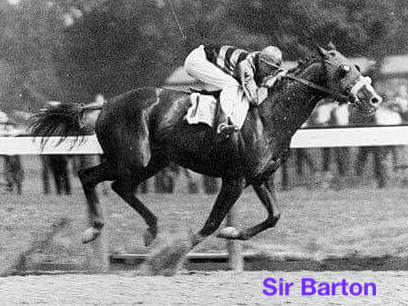
Jockey: Johnny Loftus
Trainer: H. Guy Bedwell
Owner: J. K. L. Ross
2. Gallant Fox (1930)
Jockey: Earl Sande
Trainer: James E. "Sunny Jim" Fitzsimmons
Owner: Belair Stud
3. Omaha (1935)
Jockey: Willie "Smokey" Saunders
Trainer: James E. "Sunny Jim" Fitzsimmons
Owner: Belair Stud
4. War Admiral (1937)
Jockey: Charles Kurtsinger
Trainer: George Conway
Owner: Samuel D. Riddle
5. Whirlaway (1941)
Jockey: Eddie Arcaro
Trainer: Ben A. Jones
Owner: Calumet Farm
6. Count Fleet (1943)
Jockey: Johnny Longden
Trainer:Don Cameron
Owner: Mrs. John D. Hertz
7. Assault (1946)
Jockey: Warren Mehrtens
Trainer: Max Hirsch
Owner: King Ranch
8. Citation (1948)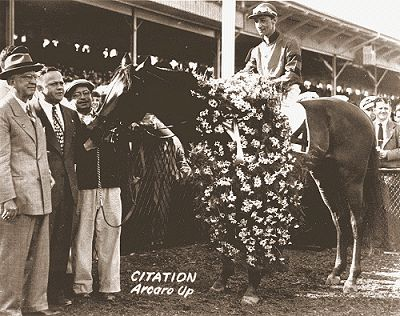
9. Secretariat (1973)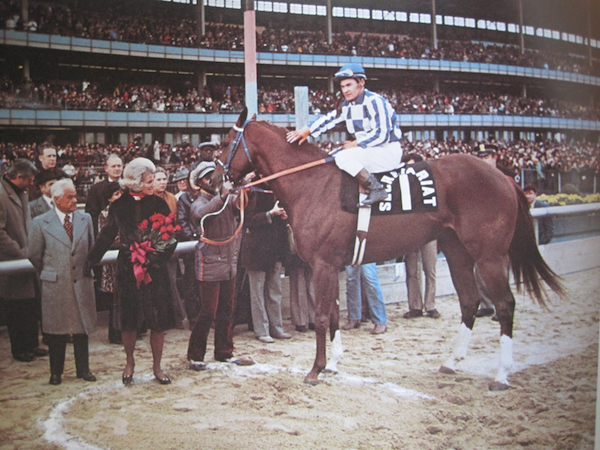
Jockey: Ron Turcotte
Trainer: Lucien Laurin
Owner: Meadow Stable (championed by Penny Chenery (Tweedy))
10. Seattle Slew (1977)
Jockey: Jean Cruguet
Trainer: Billy Turner
Owner: Mickey and Karen Taylor; Dr. Jim Hill and wife, Sally
11. Affirmed (1978)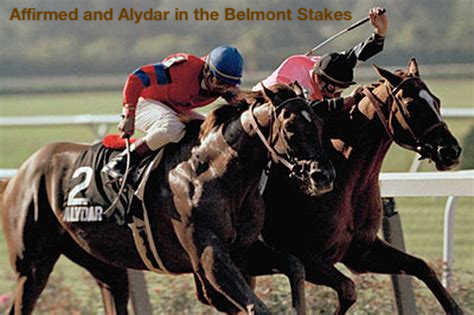
Jockey: Steve Cauthen
Trainer: Laz Barrera
Owner: Harbor View Farm
12. American Pharoah (2015)
13. Justify (2018)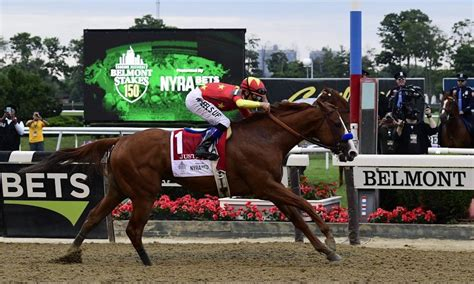
|
|||
| search engine by freefind |
Your ad could be in the next issue of idleguy.com for as little as $6 per month. Contact Fearless Rick using the form on page 12 for more information.